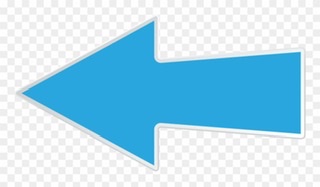About the Vizsla
The Vizsla (VEE-shla) is also known as the Hungarian Vizsla. It is one of the continental breeds of hunter, pointer, retrievers. Its primary use in the U.S. is to point upland game birds, but it is not a specialist. It will hunt any fur or feather game that it has been trained to find. This is where the term “versatile” comes from. The Vizsla, German Shorthair Pointer, German Wirehair Pointer, Weimaraner, and others are some of the versatile hunting dogs because they are capable of hunting both fur and feather on land and water.
The Vizsla was rumored to be developed by the Magyars over one thousand years ago. It was reportedly reduced to 12 confirmed pure-bred individuals after the end of WWI & WWII, and was infused with “unregistered” dogs who looked like Vizslas to re-establish the breed. Today’s Vizsla retains many of the original breed traits, thanks to the selective process the Hungarian kennel masters used in its recreation. Some of those traits include the versatility to hunt all types of fur and feather game while still being a devoted house companion at the same time. Click here for a more detailed and thorough history of the breed.
There is not as large a division between the “show Vizsla” and the “field Vizsla” as you see in almost every other breed in the sporting group. Yes, there is some division, but most Vizsla breeders today have worked very diligently to maintain the duality and versatility of the breed through carefully planned breeding programs. The pedigree of a well bred Vizsla should contain both Field and Show titles.
The general appearance of a Vizsla is that of a medium-sized short-coated hunting dog of distinguished appearance and bearing. Robust, but rather lightly built; the coat is of an attractive solid golden rust. This is a dog of drive and power in the field yet a tractable and affectionate companion in the home.
Everything about the Vizslas appearance should be strong, smooth, lean and muscular, giving the impression of regal bearing.
The ideal size for adult male Vizslas is between 22 and 24 inches at the highest point over the shoulder blades. Females should be between 21 and 23 inches. Any Vizsla measuring 1½ inches above or below these measurements is not within standard. The Vizsla will also have its tail docked ⅓ off, leaving ⅔ intact, to prevent injuries while hunting.
The Vizslas temperament should be lively, gentle-mannered, demonstrably affectionate and sensitive though fearless with a well-developed protective instinct.
Vizslas are a very high energy breed with a very high intelligence. This can turn to destruction if he is not given a “job” and adequate daily exercise. “Busy paws are happy paws” should be their motto.
More Facts about Vizslas
Indoor Dogs
The Vizsla breed originated in Hungary as a sporting dog owned by the aristocracy. The Hungarian aristocrats who hunted with their Vizslas always brought them in before the fire after the hunt. Present-day Vizslas must have gotten wind of this history because Vizslas require a home where they can be indoors with their family. They do not make good “outside” dogs.
Velcro Dogs
Vizsla owners have given the breed the nickname “Velcro Dog” because of the Vizslas need to cling to its owners and be with them at all times. Your Vizsla will follow you from room to room as you change activities around the house, settling down on a comfortably soft surface–like a couch or soft chair or–in a pinch– a dog bed. If you don’t close the bathroom door tightly you will surely have company in there, too.
People Lovers
Vizslas who have been properly socialized adore people. Most of them love to lick your face, if allowed, and most will give a “Vizsla hug” around your neck while doing so. Like most breeds, Vizslas are good with children, cats, and other dogs if they have been introduced to them early on. The breed standard for Vizslas says that they must be “demonstrably affectionate”. This means that Vizslas in the show ring, especially the younger ones, will frequently try to lick the hands or face of the judge.
Not Good Loners
The downside to all this love and affection is that vizslas hate to be alone, and many are prone to separation anxiety. If you have long working hours and feel that you MUST have a Vizsla, at least provide a companion dog so that those long hours of being alone won’t be spent in destruction of property, barking, or jumping fences to go looking for you. It also helps if you give your Vizsla a good run BEFORE you leave for work. An exercised Vizsla with chewing toys and a comfortable bed will usually settle down after you leave.
Hunters/Prey Chasers
Vizslas were selectively bred for hunting, and their good eyesight, sensitive nose, and energetic enthusiasm in the field make them an excellent hunting companion. This same instinct means they will chase anything with fur and feathers that they consider prey. Acquainting them with the family cat, therefore, needs to be done at an early age.
Need Exercise
Be sure that your Vizsla gets lots of exercise (a good run every day) and lots of extra play (ball retrieving is a favorite), attention and love from your family. An unexercised Vizsla left to its own devices can become destructive. The importance of their need for exercise in order to be “good dogs” in the home cannot be stressed enough. The most common reason that Vizslas are turned into rescue is because they have too much energy or need more attention than the owner can give.
Coat
Vizslas have a beautiful short-haired russet coat which sheds very little. When you pat them on top of the head, it feels like velvet. Not only is this short coat attractive, but it’s also practical. Vizslas are the original “wash-and-wear” dog.


